Historical background of JSC "Klimov. CJSC "Cargo-Express" vs JSC "Klimov"
On June 14, 2006, the official visit of the Deputy Prime Minister of the Russian Federation - Minister of Defense Russian Federation Sergei Ivanov at the Federal State Unitary Enterprise "Plant named after V.Ya. Klimov". During the visit, a meeting was held with the heads of enterprises and organizations of the military-industrial complex, at which the issues of integration of engine-building enterprises within the framework of the State Armament Program for 2007-2015 were discussed. and the Federal Target Program for the Development of the Military-Industrial Complex.
The very fact of holding such a meeting on the territory of the Plant. V.Ya. Klimova says that this enterprise has one of the key roles in the development and production of aircraft engines of the future. To understand the motivation of the defense department, let's take a little historical digression.
In 1912, an urgent need arose in St. Petersburg to organize engine repair shops, since 5-10 new Renault cars appeared in the city every month. Later, in 1914, an enterprise was opened, the purpose of which, according to the Charter, was: "... establishments for the production and sale of various kinds of cars, car engines and other accessories, the installation, purchase and maintenance of garages and the operation of cars." "The Sovereign Emperor deigned to consider this charter and approve it, in Tsarskoe Selo, on the 7th day of October 1914." Thus was born "Joint Stock Company Russian Renault".
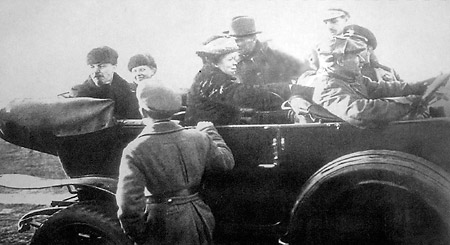
The company settled in St. Petersburg at Nevsky 7, where there was not only a central office, but also a car dealership. Russian Renault was purchased by private individuals, combat units of the Russian army were equipped with it, and 5 cars entered the Imperial Garage. In 1917, these 5 Renaults went to the new government, and went directly to the revolutionary government.
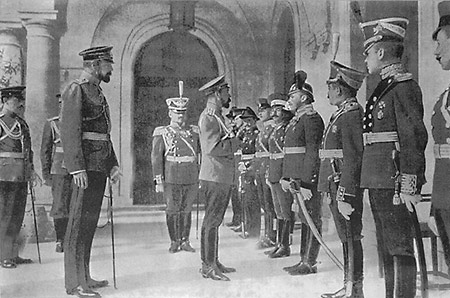
Renault engines were equipped not only with cars, but also with French aircraft designers, many of which then took part in the battles of the First World War. Used such aircraft and Russian army. Back in 1911, in Livadia, the first graduation of officers-pilots of the Officer School of Aviation took place.
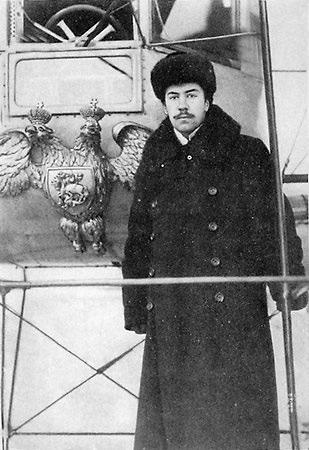
Highly qualified specialists and at the same time politically active citizens worked at the enterprise. The detachment of Russian Renault participated in the capture of the Winter Palace, and then joined the ranks of the Red Army. Despite the difficult years of the war and the revolution, work at the enterprise was not interrupted: in 1916, Igor Ivanovich Sikorsky tested his "Ilya Muromets"; Slesarev's heavy airplane also flew on Renault engines.

And in the hungry years of devastation, work and experiments with aircraft continued. In the mid-twenties, the revival of industry begins. The company was looking for its niche, and in 1925 the first attempts at the production of motorcycles began at the plant. In the thirties, the plant, combined with the Krasny Oktyabr enterprise, produces 37mm motorcycles for the Soviet army. shells, and, based on a licensed American engine from Liberty, the M-5 engine for T-26 and T-28 light tanks. Parts are also produced for engines of FORDZON tractors.
On the very first day of the Great Patriotic War, 700 employees of the enterprise, despite the "reservation", went to the front. On July 25, wagons began to be brought to the plant, and the evacuation of the enterprise to Ufa began, where workers and equipment were unloaded in an open field. Then the Rybinsk Aircraft Engine Plant No. 26 (also the former Russian Renault) and the Design Bureau headed by V.Ya. arrived in Ufa. Klimov, Gorky plant, and others. On the basis of the Ufa Aircraft Building Plant, the production of motors was organized, which began full-scale production in December 1941. In besieged Leningrad, on the equipment that they did not have time to take out, the production of the legendary Katyushas was organized.
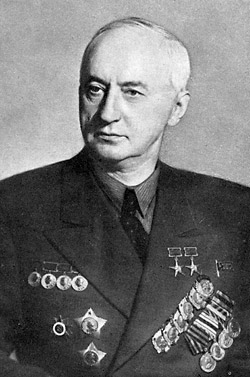
Vladimir Yakovlevich Klimov has been a well-known designer since the 1920s. From 1918 to 1924, he was the head of the laboratory of light engines at the NAMI NTO of the USSR, taught at the Moscow Higher Technical School, the Lomonosov Institute and the Academy of the Air Force. In the 24th, he was sent to Germany for the purchase and acceptance of the BMW-4 engine (in licensed production of the M-17). From 1928 to 1930 he was on a business trip to France, where he also purchased the Gnome-Ron Jupiter-7 engine (in licensed production of M-22).
From 1931 to 1935, Vladimir Yakovlevich headed the department of gasoline engines of the newly created IAM (later VIAM) and headed the engine design department of the MAI. In 1935, as the Chief Designer of the plant ╧26 in Rybinsk, he was sent to France for fine-tuning and subsequent purchase of the Hispano-Suiza 12YBRS engine.
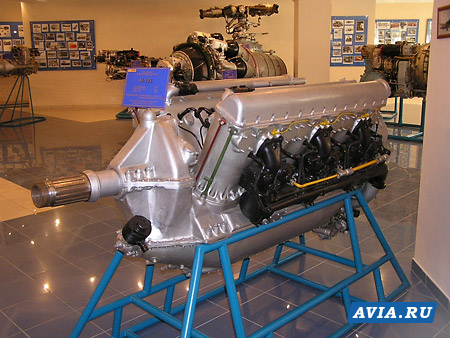
The power of the Hispano-Suiza engine, modified in Russia, was almost doubled - up to 1250 hp. The new engine received the M-105 index, and from the 40th year they began to equip the Yak-1 aircraft, and later the Yak-3, Pe-2, LaGGi. In 1941, the production of the engine takes place at a plant headed by Klimov in Ufa.
Interesting fact: Since 1942, the Normandie-Niemen squadron fought on Yak-1 aircraft, which returned to France in 1945 on new Yak-3s donated to the allies, equipped with VK-107A engines (the latest modification of the M-105 engine with a power of 1650 hp) . In such an unusual way, the French engine, transformed by Russian designers, returned to the "ancestral homeland".
Since 1943, for his contribution to the cause of victory and on Stalin's personal order, all Klimov's engines received the designation "VK" (Vladimir Klimov), and Klimov himself was awarded the rank of Major General of the Aviation Engineering Service. And in 1947, Klimov became the Chief Designer and Director of Plant No. 117 in Leningrad.
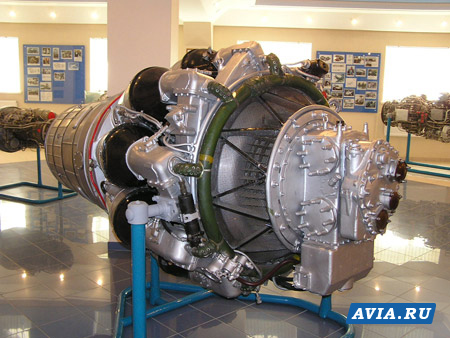
In the post-war years, it became obvious that the future of aviation was in jet engines. The first such engine - RD-10, developed on the basis of captured German, was installed on the Yak-15 and Yak-17. Then, based on the licensed English Rolls-Royce engine, the VK-1 is created. The initial thrust of the "Englishman" of 2100 kg was increased to 2700, in the afterburner version (VK-5F) - 3380 kgf. This engine lifted the MiG-15bis, MiG-17, Il-28 bomber and Tupolev torpedo bombers into the air. The development of jet aircraft in those years was so rapid that already in 1950, our pilots were using these machines to carry out combat missions in the skies of Korea. In fact, Soviet designers, during just one human life, created a school of domestic aircraft and engine building. The MiG-15bis aircraft was recognized by world experts as the best fighter of the 50s.
In 1963, after the death of an outstanding designer, the plant was named after Vladimir Yakovlevich Klimov.
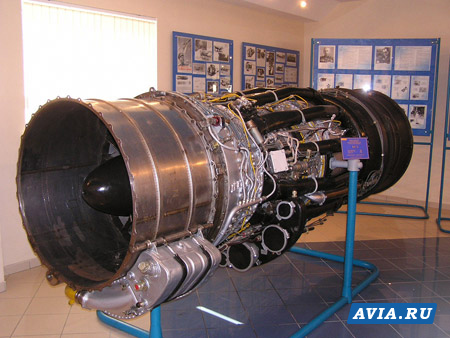
Already in the process of serial production, it became clear that further improvement of the design of engines with a centrifugal compressor is a dead end. A scheme of a two-stage axial compressor with an afterburner was adopted, and in the design of the VK-3 engine, developed and tested by 1956, those solutions were used that are fundamental for today's engines. In the forced version, the engine thrust was 10 tons.
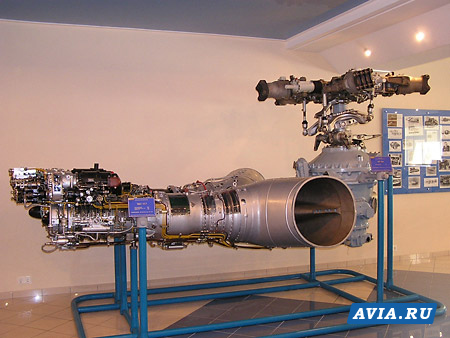
Since 1956, the plant began to develop turboshaft and turboprop engines. In Russia, the development of engines for helicopters began to be engaged somewhat later than in other countries. To overcome the backlog and not to reinvent the wheel, it was decided to develop the GTD-350 engine for the Mi-2 light helicopter based on the 250 hp Alison engine. In just 3 years, a new power plant was created (including a gearbox of the original design) and in 63 its mass production began. And in 1964, the TV2-117 engine was already created for the Mi-6 medium helicopter. A modification of the engine running on natural gas was also developed (see photo). That engine did not go into series, but the developments were later used to create ground-based power plants based on exhausted TV3-117 engines running on natural and associated gas.
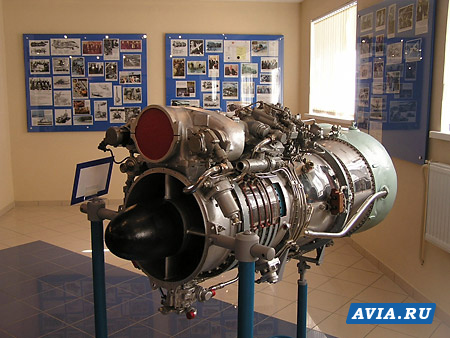
Engines created at the plant. V.Ya. Klimov, installed on 95% of domestic helicopters. Helicopters with engines of the TV3-117 family (installed on all types of medium-sized Mil and Kamov helicopters) are operated in 80 countries around the world. Modification of the TV3-117 engine - the VK-2500 engine (year of creation - 2000), designed for installation on the Ka-50/52 Black Shark, Mi-28N, Mi-35 helicopters, develops a power of 2700 hp in emergency modes. The overhaul life of VK-2500 is 3000 hours, and the designated one is 9000 hours.
Today Plant them. V.Ya. Klimova is the only enterprise in Russia engaged in the development of helicopter power plants, and in the entire range of required capacities. In the 600-1000 hp class, this is the VK-800 engine for the ANSAT, Ka-226, Mi-54 helicopters, this is the VK-1500V for the Mi-8 and Ka-60 in the 1600-1900 hp class, and TV7- 117C with a power in the range of 2500-3500 hp. for advanced aircraft and helicopters.

In 1968, the Council of Ministers of the USSR issued a decree on the development of a gas turbine engine for tanks. In 1976, the State tests of the T-80 tank with the GTD-100T power plant were completed. The last serial modification of this engine, the GTD-1250, developed by 1986 for the T-80U and the Black Eagle, accelerated a 48-ton vehicle to 80 km. at one o'clock. Due to the fact that gas turbine engines are not sufficiently "soldier-resistant", the production of these engines has been discontinued. However, T-80s with such engines are successfully operated by the armies of South Korea and Cyprus, and the officers of these countries are very pleased with our vehicles.
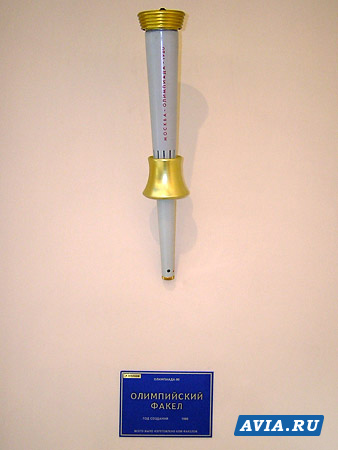
In addition, the design bureau of the plant created propulsion systems for the second stage of the UR-100 intercontinental ballistic missile and the second stage of the S-200 anti-aircraft missile. One of the unusual developments of the plant was the Olympic torch for the Moscow Olympics 80. All 6200 torches were manufactured at the plant named after. V.Ya. Klimov.
![]()
In the early 1970s, A.I. Mikoyan Design Bureau received a state order for the creation of a new generation aircraft (MiG-29), superior to foreign designs. Engine-building design bureaus of the country, including the design bureau of the V.Ya. Klimov Plant, were given the task to develop a project for a turbojet engine with an afterburner. At the end of 1977, the gas generator of the RD-33 engine, developed under the leadership of Sergei Petrovich Izotov, won the competition. The design of the RD-33 compressor was so successful that it formed the basis for the AL-31 engine developed by Arkhip Mikhailovich Lyulka for the heavier front-line Su-27.
Izotov had his own approach to engine design. Initially, the engine was developed with a minimum margin of "strength", and already in the process of testing, weaknesses were identified, which were finalized and strengthened. Thus, the lightest design was obtained with the required characteristics. As a result of painstaking work, the RD-33 has become one of the best traction in its class in terms of its technical parameters and still surpasses many foreign analogues in a number of indicators. Engines of the RD-33 family are distinguished by a high level of gas-dynamic resistance to external disturbances, including when using airborne weapons, and, therefore, do not impose any restrictions on aircraft piloting. They have a high rate of increase in thrust, and hence the speed of flight, which is especially important for modern fighters.
The production of experimental batches began in 1981, and since 1985, after State tests, its mass production was launched at the plant named after. Chernyshev. The experimental MiG-29 made its first flight in October 1977. And 30 years later, it is one of the best fighters in the world in terms of maneuverability and combat effectiveness. To date, about 4,000 RD-33 engines are in operation on MiG-29 aircraft in 25 countries around the world.
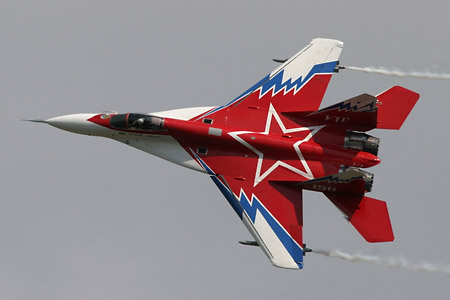
Subsequently, about ten modifications were created on the basis of the engine. The latest modification of the RD-33 of the 3M series, designed for installation on MiG-29K aircraft (carrier-based modification of a fighter), has a takeoff thrust of 9 tons, an overhaul life of 1000 hours, and an assigned life of 4000 hours. Currently, work on the RD-33 is being carried out in the direction of increasing reliability and resources, increasing traction. For this purpose, elements of aircraft engines of the 5th generation are being introduced into the design, including a digital control and monitoring system of the FADEC type, developed and manufactured by the V.Ya.Klimov Plant.
One of the main requirements for fifth-generation fighters is the ability to conduct maneuverable close combat with enemy aircraft at subsonic speeds. The main design element that will provide the advantage of the new fighter is the engine with a deflectable thrust vectoring nozzle (ET). The problem of creating such an engine was successfully solved by the specialists of the plant. V.Ya. Klimov, creating a tandem that is unique in its characteristics and capabilities: the RD-33 engine and the KLIVT nozzle (KLImov Thrust Vector). Now there is a single flight copy of the MiG-29 fighter with OBT, the international presentation of which in May of this year became a sensation at the ILA-2006 air show in Berlin. The first display of this combat vehicle took place in August 2005 at the MAKS air show (pictured). Fighters that have received a new RD-33 engine with OVT will receive a new name - MiG-35. This model takes part in the tender for the supply of 126 fighters for the Indian Air Force.
For reference:
The KLIVT nozzle is designed for use in turbojet engines of the RD-33 and AL-31F families. The presence of such a nozzle significantly improves the characteristics of the maneuver and combat effectiveness of fighters when flying at subsonic speeds at supercritical angles of attack. The axisymmetric system of the exhaust device with the rotation of the supersonic part of the jet nozzle provides all-aspect (360 degrees) deflection of the thrust vector. The KLIVT nozzle can be used in the designs of other types of turbojet engines, both Russian and foreign.
The main characteristics of the RD-33 engine of the 3M series:
Thrust, kgf
- takeoff emergency mode 8700
- full boost mode 8300
- maximum non-afterburner mode 5040
Length, mm 4230
Maximum diameter, mm 1040
Dry weight, kg 1050
The main characteristics of the nozzle:
Thrust vector deflection angle in all directions, deg. +-15
Thrust vector deviation speed, deg./s 60
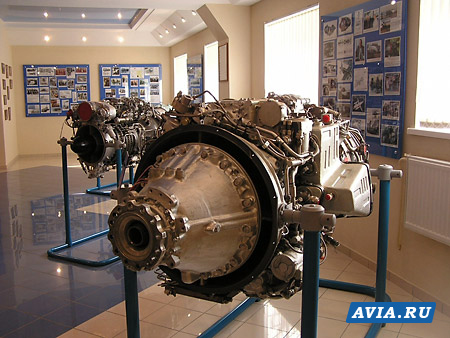
One of the latest engines developed at the plant was TV7-117 (power 2500 hp) - an engine for regional aircraft IL-114. In the process of creating subsequent modifications, its thrust will be increased to 3.5 tons. Based on this engine, helicopter versions for the Mi-38 and Ka-50 were also developed.
In 2003, Alexander Ivanovich Vatagin was appointed General Director of the Federal State Unitary Enterprise "Plant named after V.Ya. Klimov". Today, the company is part of the holding FSUE RSK "MiG". The company is a unique enterprise for Russia, which is simultaneously engaged in several areas of activity in the field of gas turbine construction: helicopter engines, turboprops, jet engines for combat aircraft, ground power and power plants. At present, a new area of activity is being intensively developed: the creation and production of our own automatic engine control systems (ACS). In addition, the plant produces and overhaul helicopter engines on the most modern equipment using the latest technologies, as well as support for the operation of aircraft of our own design at all stages of the life cycle.
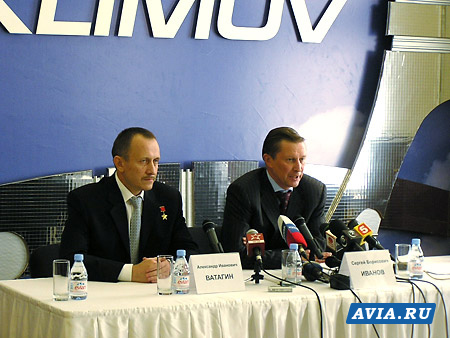
On June 14, 2006, at the end of the meeting at the Federal State Unitary Enterprise "Plant named after V.Ya. Klimov", Defense Minister Sergei Ivanov answered journalists' questions:
- Is it planned to include new developments of the Klimov Plant in the State Defense Order?
Yes, definitely planned. I can confirm this. This is also connected with the creation of a new generation of engines, both aviation and helicopter. And in this sense, the Klimov Plant is the leader in our country, undoubtedly, including the creation of both aircraft and helicopters of the 5th generation. The State Armaments Program, which I hope will soon be approved, provides for all this. - At what stage is the process of creating a 5th generation aircraft?
First, the share of funding for each of the participants in this project, including the Ministry of Defense, is clearly defined. Those. simply in shares, clear figures, sources of financing are recorded and agreed. This is one of the few public-private partnership projects. As a result, the first experimental aircraft in the air, with the appropriate engine, we should see in 2009. - Does the Klimov Plant participate in this project?
Participates. Along with others, of course. - Have you approved the project to create an engine-building holding (Klimov+Chernyshev+Salyut+Ufimskiye motorovy)? If yes, under whose control?
Here it doesn't even matter under whose control, it is important when it will be created and how effective this holding will be. I think that by the end of this year it is quite possible to create an engine-building holding. That he is needed, no one doubts. It is possible that other enterprises will also be included in the holding.Naturally, the degree of integration in this holding may be different, but, let's say, the first-level structure (the enterprises listed above) is already an issue that is little discussed, since there are no opponents. And, of course, the Klimov Plant should be included in this holding.
Today, by the way, Alexander Ivanovich and I discussed the state of affairs at his enterprise in sufficient detail, and I must say that a lot has been done here over the past 2 years in order to bring the enterprise out of the most difficult financial and economic state, to pay off or restructure normal debt. And now there is no concern about the enterprise. - Isn't it time to transfer the production of engines from Ukraine to the Russian Federation.
We must look wider. The level of cooperation between the Russian and Ukrainian military-industrial complex is great. Over the past 10 years, something has been done in the Russian Federation to transfer the production base and technologies completely to its territory. First of all, this concerns the subject of strategic missile forces and aviation.I will not now predict the fate of this or that enterprise, but the fact that if Ukraine joins NATO there will be a painful and rather expensive process of breaking ties is inevitable. The Russian military-industrial complex has been thinking about this for several months, and we are planning something.
July 5, 2006
Roman Gusarov, AVIA.RU
The editors thank Alexander Alekseevich Tafeev and the press service Plant them. V.Ya. Klimov for help in preparing the report.
Reviewed by Trusted User
It's just that the hair stands on end (and not only on the head) when I see the degree of incompetence of the leadership of the defense enterprise JSC "Klimov" (production of aircraft engines in St. Petersburg), and more precisely, its production director S.V. Kurov (http: / /www.klimov.ru/about/structure/), which is not able to control the situation at all. Apparently, S.V. Kurov did not play enough of a manager in his childhood and continues to play now. The company is in the process of moving to a new production site in Shuvalovo, where a production complex and two nine-story (!) administrative buildings have been built. A heavy multi-ton stamping machine was brought to the production building from the old site (a place that has long been in a landfill) and installed next to new CNC machines that do not tolerate vibration from stamping. Next to the same latest CNC machines, they put old repainted dry grinding machines that create an incredible amount of abrasive dust and even installed new dust collectors will not protect 100% of this dust. Machine operators have to wait for weeks (!) for the necessary tools and equipment to start processing parts. On the other hand, a whole department has been created for the culture of production, idlers from which a crowd walk around the machine room, distract operators from work (although people's lives depend on the quality of the operators' work in the future) and demand that all rags be removed near the machines, tools and equipment should be put in the appropriate boxes, and on drawers stick the appropriate tags (such as to make everything beautiful). Also, at the request of these clowns and with the approval of Kurov, a blue tape was pasted on the floor around the machines (like in Europe with Japan), although they themselves cannot explain why it was done in Geyrop and Japan (see below). The level of managerial idiocy also manifested itself in the fact that they cleaned and painted the old locksmith workbenches at the old site, brought them to the new site, and from there ... threw them into a landfill! One feels army idiocy - the main thing is not the result, but the process. Apparently, S.V. Kurov confused the defense enterprise with the army barracks. November 22, 2013 Vladimir Putin visited the enterprise (http://www.youtube.com/watch?v=47fZsKXOtKc), one should have seen the window dressing that they (the company's managers) gave him. Executive director A.I. Vatagin told Putin that the team was satisfied (well, well ...). I don’t want to somehow denigrate A.I. Vatagin, he is really a worthy person who at one time received the star of the hero of the USSR, and who headed the enterprise when he was essentially captured by the raiders, apparently he does not have any information about what is happening at the enterprise. And what is happening there is complete confusion, complete isolation of the leadership from the production process, the managerial staff is incredibly swollen - there are about a dozen directors alone (plus a bunch of deputies and secretaries). The leadership is mainly busy with showing off in front of journalists, giving bribes to all sorts of inspection commissions (such as AR IAC), as well as daily meetings. Meanwhile, the earnings of the personnel directly involved in production are very modest. The operator of the 5th category earns in its pure form approximately 22,000-28,000 rubles (Not at all European). According to unverified information, the company's management squandered a decent amount of factory money at the New Year's corporate party and is now looking for any reason to deprive ordinary employees of bonuses. For this, another position was introduced - the director of discipline. And this is not the whole list of managerial feats. Experienced operators who gave the best years of their lives to the enterprise simply give up, young people, seeing all this mess, do not linger for a long time. Professionals capable of producing micron precision aircraft parts on equipment with program management who have many years of production experience and programming skills are not needed by the current management. On the other hand, I. Ivanov, the head of the compressor section (a tram tramp, a redneck and a careerist, who has not worked at the machine for a single day and cannot read technical documentation) was recently appointed head of production. Apparently they are needed. Sad, very sad...
I hope the deputy Chairman of the Government of the Russian Federation Rogozin D.O. and Gen. prosecutor V. Chaika will see this message and take appropriate measures.
For reference: in Japan, in production workshops, they really glue a special tape around the machines for a simple reason - they use industrial robots to replace human labor, including for washing floors. To prevent the cleaning robot from hitting an obstacle (equipment), the floor around the machines is covered with signal tape.
The prosecutor's office spins the engines. A criminal case has been initiated against the management of JSC "Klimov"
Alexandra Gritskova, Konstantin Lantratov
As Kommersant has learned, the St. Petersburg prosecutor's office opened a criminal case on the fact of abuse by the management of JSC Klimov (St. Petersburg), a leading developer of aircraft engines controlled by the Federal State Unitary Enterprise Russian Aircraft Corporation MiG. The case concerns the sale in 2004 of ten helicopter power plants. The head of the United Aircraft Corporation, Alexei Fedorov, believes that the current situation "creates a serious threat to the completion of the formation process" of the United Aircraft Corporation, in which Klimov should be included as part of the RAC MiG.
On March 6, the prosecutor's office of St. Petersburg opened a criminal case on the fact of abuse of official powers by the management of OAO Klimov (Article 201 of the Criminal Code of the Russian Federation). On March 20, he was handed over to the Prosecutor General's Office. The reason for the investigation was, in the opinion of the prosecutor's office, an "economically unjustified" deal for a state-owned enterprise, carried out at the end of 2004: Klimov sold ten helicopter engines to CJSC Inkom, allegedly at a reduced price. Then, according to the investigation, CJSC Inkom resold the engines, earning about 3 million rubles on this.
In September 2004, the leadership changed at the Klimov plant: Alexander Vatagin was appointed general director instead of Alexander Bobrov. As Kommersant was told at the enterprise, these ten engines were sold to pay off wage arrears. At that time, the total debt of the enterprise was about 1 billion rubles. "The contract with CJSC Inkom was concluded to prevent the bankruptcy of the enterprise," they say at the plant.
Dealing with the problems of the enterprise, the new management of OJSC "Klimov" revealed the abuses committed by the former general director. In April 2005, the Main Investigation Department of the Central Internal Affairs Directorate of St. Petersburg and the Leningrad Region charged Alexander Bobrov under Art. 159 of the Criminal Code of the Russian Federation ("Fraud") for the theft of property in the amount of 20.3 million rubles. and attempted theft of state property in the amount of 180.3 million rubles. In addition, a case was initiated against Oleg Kuznetsov, director of ZAO Cargo-Express, an intermediary firm that worked with OAO Klimov. According to the investigation, Mr. Bobrov, without the consent of the RAC MiG and the Federal Agency for Industry, issued the plant's bills for a total amount of more than 200 million rubles, with which he paid the CJSC for allegedly supplied components for engines, resulting in a "fictitious debt" of "Klimov" in front of CJSC "Cargo-Express".
Representatives of the enterprise associate the initiation of a criminal case against the new management of JSC "Klimov" with the old bill of exchange history. The fact is that right now Cargo-Express CJSC is trying to recover 234 million rubles from Klimov OJSC through the courts, which the company allegedly owes to it on promissory notes (the amount has increased taking into account fines and penalties). The Arbitration Court of St. Petersburg and the Leningrad Region told Kommersant that the ZAO filed a lawsuit against the JSC on February 22, that is, a few days before the initiation of the criminal case.
The leadership of the United Aircraft Corporation (UAC) has already intervened in the situation, in which the Klimov should be included as part of the RAC MiG. On March 12, UAC President Alexei Fedorov sent a letter to Prosecutor General of the Russian Federation Yuri Chaika, in which he asked to check the validity of the initiation of a criminal case and the claims of Cargo-Express. It was after this that the Prosecutor General's Office withdrew the criminal case from the prosecutor's office of St. Petersburg.
"The transfer of the shares of OAO Klimov to the economic management of the Federal State Unitary Enterprise RSK MiG should ensure the process of corporatization of the MiG corporation and the introduction of its shares into the authorized capital of the UAC by April 1, 2007," the letter sent to the prosecutor general says. At the same time, Mr. Fedorov notes that the situation "creates a serious threat to the completion of the process of forming the KLA." According to Kommersant's information, a new schedule for corporatization of RAC MiG is currently being coordinated with the Federal Property Management Agency, which provides for the corporation's entry into UAC no earlier than June 21.
JSC "Klimov" and RSK MiG believe that the criminal case is connected exclusively with the activities of the former management of the plant and the intermediary company. "I consider all the current events the last attempt by the head of Cargo-Express CJSC to evade responsibility for the actions that brought the plant into a deplorable state. I think the court and the Prosecutor General's Office will put an end to this matter," Alexander Vatagin, general director of Klimov OJSC, told Kommersant. . "The leadership of the RSK MiG hopes that the prosecutor's office will figure everything out," says Elena Fedorova, head of the corporation's public relations department.
CJSC "Cargo-Express" itself refrains from commenting in connection with the criminal case and court proceedings. Perhaps this is due to the fact that the head of the company, Oleg Kuznetsov, is abroad.
However, experts note that Cargo-Express itself does not have sufficient administrative and financial resources to carry out such an attack on a large state-owned enterprise. "Probably, the actions of Cargo-Express are inscribed in a wider campaign that is being waged against the Klimov plant or against the RSK MiG," said Konstantin Makienko, an expert at the Center for Analysis of Strategies and Technologies. Recall that at the end of last year it became known about a criminal case against the first deputy general director of the RAC MiG, Sergei Tsivilev, who was suspected of trying to sell to Poland a batch of spare parts for MiG-29 fighters that did not meet the terms of the contract. However, later the Moscow Prosecutor's Office dropped him from the charges of fraud on an especially large scale and forgery of documents, considering that they were brought prematurely.
Plant named after Klimov
The Klimov Plant (St. Petersburg) is one of the largest developers of aircraft engines in the Russian Federation. Engines for most Mi and Ka helicopters, as well as for aircraft of the MiG and Il families, were created here. The plant also developed an engine for the T-80U tank, gas turbine engines for marine vessels, and mobile power plants based on them. In December 2006, it was reorganized into OAO Klimov. On March 5, 2007, by decree of the President of the Russian Federation, JSC Klimov was completely transferred to the economic management of RAC MiG as part of the formation of JSC United Aircraft Corporation.
© "Your secret adviser" newspaper, 04/23/2007, "Klimov" cannot be brought down!
How a small trading and intermediary firm tried to ruin the largest aircraft engine plant
Irina Molchanova
There is an opinion that only small money is earned with great difficulty. And millions come easily and effortlessly. The main thing is to know the “moves” by which you can pump green papers into your pocket. The word "earn" here is as inappropriate as such concepts as decency and honesty. To achieve these goals, all means are used. In the heat of financial transactions, businessmen sometimes lose all sense of reality and end up in their own networks.
An attempt to ruin the well-known domestic plant "Klimov" by a certain trading and intermediary firm "Cargo Express" is a perfect illustration of the franticness of modern raiders.
The "Privy Councilor" became aware of the details of this amazing story. The scheme, according to which they tried to ruin the largest enterprise, is simply striking in its unscrupulousness ...
Attacks on a state-owned enterprise
Petersburg Plant named after Klimov is known throughout the world as a leading developer of aircraft engines of all modifications, including those for MiG and SU fighters. Having survived all the upheavals of the transition period, having once been on the verge of bankruptcy, Klimov nevertheless managed to maintain its unique production, which has no analogues in the entire post-Soviet space. In the last three years, the plant seemed to have gained new life- an extensive volume of orders has been formed, a team of professionals has been created, wages have been increased by 50 percent, revenues have risen by 2.5 times ... It would seem that there is no cause for alarm. But peace came to the enterprise quite recently. After the small trading and intermediary company Cargo-Express, which made every possible attempt to ruin the largest enterprise, finally left Klimov’s field of vision. Immediately after the plant was transformed into a state-owned joint-stock company, the management of Cargo-Express became very active, presenting financial claims to the enterprise.
Let us clarify right away that 100 percent of the shares of OJSC Klimov are owned by the state, and the enterprise itself is the assignee of the Federal State Unitary Enterprise Plant named after V. Ya. Klimov. In this context, an attempted ruin acquires the character of a crime not against some private company, but against state property!
But until recently, they tried to ignore this obvious fact - mainly those law enforcement agencies, on whose actions the further fate of Klimov directly depended ...
Fake bills
Hard times began for Klimov in 2003, when the then director of the plant, Andrey Bobrov, entered into an agreement with the Cargo Express company, headed by Oleg Kuznetsov. In fact, these two people concentrated in their hands all the cash flows of the enterprise. Yes, so “successfully” that the plant (in the absence of a portfolio of orders!) Formed a huge accounts payable. Naturally, problems with the payment of wages immediately began. Tax debts also increased. Bobrov began to pay for the supposed delivery of products from his main partner, CJSC Cargo-Express, with promissory notes. In fact, the plant was given into bondage to creditors.
Over time, "Cargo Express" began to control not only the supply, but also the raw materials of the plant, its sale. At the same time, the plant took loans for its current activities, and paid bills of exchange with the counterparty. By the fall of 2004, the general director of Cargo Express, Oleg Kuznetsov, demanded the payment of money on promissory notes, which the plant management was not capable of in principle - the urgent debt to creditors by that time amounted to about 800 million rubles. It could already be about bankruptcy. What would have happened to the plant after that, one can not say - many Russian enterprises rested in a bose, literally cut into pieces of scrap metal.
The financial condition of the plant reached such a critical point that the Federal Agency for Industry urgently intervened in the matter. Hero Soviet Union Alexander Vatagin.
- But by that time the money had been completely withdrawn from the plant, all the raw materials belonged to Cargo-Express LLC, the current contracts with Cargo-Express LLC were concluded by the plant on onerous terms. Everything had to start almost from scratch, - says Alexander Vatagin, general director of Klimov OJSC. - The Board of Directors of OJSC Klimov, which includes representatives of state-owned enterprises - RSK MiG, Oboronprom, the Federal Agency for Industry, Rosoboronexport - will never approve the payment of such dubious bills, not a single bill has been agreed with the Federal Agency for Industry . Accordingly, obligations
With this, frankly, only Bobrov, and not a state enterprise, could fulfill criminal bills.
Attempt on 230 million rubles
All three years that the new management was leading Klimov out of the crisis, Kuznetsov, as the director of Cargo Express, did not stop trying to get no less than 230 million rubles from the state budget, which would lead to the actual closure of the enterprise! Surprisingly, the St. Petersburg prosecutor's office, represented by deputy prosecutor Vladimirov, had previously tried to cancel the decision to implicate the director of Cargo-Express as an accused (however, soon a criminal case was again initiated against Kuznetsov).
But Kuznetsov, apparently feeling such support in the St. Petersburg prosecutor's office, initiated a lawsuit with the Arbitration Court ... And this despite the fact that the Main Investigation Department of the Central Internal Affairs Directorate of St. Petersburg and Leningrad region Bobrov has already been charged with theft of property (the case file has already been submitted to the court today). Kuznetsov was also prosecuted, but he fled from the investigation abroad in time and was put on the international wanted list, which he is still on. Kuznetsov, while abroad, generally sent letters to the State Duma with a call to protect him from "arbitrariness" ...
What was he hoping for by going to court?
“You have to understand what situation Kuznetsov is in,” says Alexander Vatagin. – He began to write his statements during the period when he was charged with embezzlement of state property in the amount of 20 million rubles and attempted embezzlement of state property in the amount of 180 million rubles. He tried his best to avoid criminal liability. I believe that there was also a motive for revenge against the leadership of Klimov ...
Matvienko stood up for Klimov
It is quite obvious that the payment of fictitious bills of exchange is impossible in principle. The state did not give the green light to these deals, which directly threaten our entire aviation industry. The issuance of these bills was not coordinated with the owner of the plant - the Russian Federation represented by the federal agency, respectively, these transactions are void.
In his appeal to the General Prosecutor's Office, the head of the FAP, Boris Alyoshin, spoke directly about the threat of the capture of Klimov - that attempts were made to break up the criminal cases against Kuznetsov and Bobrov. Only after that did the Prosecutor General of Russia Yury Chaika take personal control of the investigation.
We will be able to observe the denouement of this almost detective story in the near future, when not only Bobrov, but also Kuznetsov will appear before the court.
The anti-raider commission, created under the vice-governor Oseevsky, joined the case.
“The government will protect the interests of the enterprise,” he said.
Governor Valentina Matviyenko has already intervened in the conflict and supported the position of today's Klimov leadership.
Today, on Monday, on the day the Privy Councilor is published, the head of the Federal Agency for Industry, Boris Aleshin, will arrive in St. Petersburg. In Smolny, with the participation of the governor and representatives of the federal executive bodies of state power, they will talk about the state of the enterprises of the military-industrial complex of St. Petersburg. The attempt to seize the Klimov plant will be discussed first of all ...
From the TS dossier
OJSC Klimov is a unique developer of aircraft engines used on front-line aircraft and 90 percent of the helicopter fleet of the Russian Federation, the official supplier of engines for helicopters of the Ministry of Defense of the Russian Federation, the Federal Security Service and the President of the Russian Federation. The portfolio of orders of OAO Klimov includes work on the fulfillment of contracts of the MiG Corporation and Rosoboronexport with the strategic partners of the Russian Federation in the field of military-technical cooperation - India and China. To date, Klimov JSC is the only state-owned enterprise that manufactures engines for domestic helicopters.
Plant "Klimov" move to lead the production of helicopter engines
Irina Bychina
Yesterday, the head of the Federal Agency for Industry, Boris Alyoshin, and the governor of the city, Valentina Matvienko, held a meeting of heads of enterprises of the military-industrial complex of St. Petersburg. It was expected that on the same day the city administration and OAO "Klimov" would sign an agreement on organizing the production of TV3-117 and VK-2500 helicopter engines in the northern capital. This did not happen, but Mr. Aleshin confirmed that the St. Petersburg enterprise would be the lead developer and one of the sites for organizing their production in Russia.
According to Kommersant's information, the signing of the agreement was postponed approximately until the beginning of May, so as not to "confound" the two events. Nevertheless, the head of the Federal Agency for Industry, Boris Aleshin, told reporters that the St. Petersburg enterprise would become one of the sites for organizing mass production of engines in Russia. The TV3-117 VMA engine is the base engine for all Russian attack and military transport helicopters of the Mi and Ka families, and its upgraded version, the VK-2500 engine, has even greater power resources. Today, the Ukrainian JSC "Motor Sich" is engaged in the mass production of these engines. The St. Petersburg plant produces small batches of such engines using components made in Ukraine.
The Klimov Plant (St. Petersburg) is one of the largest developers of aircraft engines in the Russian Federation. Engines for most Mi and Ka helicopters, as well as for aircraft of the MiG and Il families, were created here. The plant also developed an engine for the T-80U tank, gas turbine engines for marine vessels, and mobile power plants based on them. In December 2006, it was reorganized into OAO Klimov. On March 5, 2007, by decree of the President of the Russian Federation, JSC Klimov was completely transferred to the economic management of RAC MiG as part of the formation of JSC United Aircraft Corporation.
The decision to start serial production of engines in Russia was made by the government of the Russian Federation so that domestic helicopter manufacturers would not depend on foreign suppliers, and also in connection with the prospect of Ukraine joining NATO, after which control over part of the purchased products may be lost. The project involves state funding under the target federal program "Development of the military-industrial complex for 2007-2015 and for the period up to 2025." Recall that among the contenders for the creation of the site were three main Russian manufacturers: the Chernyshev Moscow Plant, the Ufa Engine Production Association(UMPO) and JSC "Klimov".
Back in November 2006, the military-industrial commission, headed by Deputy Prime Minister Sergei Ivanov, recommended that the government organize serial production of helicopter engines at UMPO OJSC. However, yesterday Mr. Aleshin said that Klimov OJSC would be the lead developer and one of the production sites. The second site, according to Kommersant's information, will be the Chernyshev Moscow Plant. According to Klimov's own estimate, the creation of an engine assembly plant will require 3 billion rubles, most of which will be received from the federal budget. However, yesterday Mr. Aleshin did not undertake to name the final dates for the formation of the engine-building holding. In general, following the results of the meeting, the head of the Russian agency for industry noted the successful dynamics of the development of St. Petersburg enterprises, adding only that he wants to see the military-industrial complex more diversified.
Gone into a tailspin
An attempt to raiderly seize the Klimov plant failed: one defendant is in the dock, the other is on the international wanted list
Irina Molchanova
According to these enterprising businessmen, the St. Petersburg plant for the production of aircraft engines owes them 230 million rubles! In an effort to return this money, the attackers actively used the St. Petersburg prosecutor's office and State Duma deputies ... Moreover, one of the entrepreneurs at that time was on the international wanted list, hiding from Russian justice, while the other was awaiting a court verdict. But the attack on the plant failed miserably.
Two directors
The names of these entrepreneurs will not tell anyone anything. A certain Bobrov and a certain Kuznetsov. But these people are far from simple. You need to have remarkable abilities in order to pull off a scam that could threaten the ruin of a state-owned enterprise working for the defense industry!
The Klimov Plant is a leading developer of aircraft engines of all modifications, including those for MiG and SU fighters. Klimov is the official supplier of engines for helicopters of the Ministry of Defense of the Russian Federation, the Federal Security Service and the President of the Russian Federation. The Russian Aircraft Corporation MiG associates the future of fighters only with the Klimov plant, which is the developer of the power plant, including the unique RD-33 with a deflectable thrust vector, which foreign experts are delighted with.
It is more than strange that the work of such an enterprise could be made dependent on the activities of two entrepreneurs. The first one, Andrey Bobrov, the former director of the plant, is today accused of abuse of office and fraud and is awaiting a court verdict. The second - Oleg Kuznetsov, director of the trading and purchasing company "Cargo Express" - is hiding from the investigation and therefore put on the international wanted list.
bill scheme
History is silent about who in his head (Kuznetsov or Bobrov) was born a cunning plan, thanks to which it became possible to get 230 million rubles from the state budget into his personal pocket. In 2003, Bobrov entered into an agreement with Cargo Express, represented by its general director Kuznetsov. Under this agreement, the plant paid for the supply of products from its main partner - CJSC "Cargo-express" - with promissory notes. Over time, "Cargo-express" began to control not only the supply, but also the raw materials of the plant, its sale. At the same time, the plant took loans for its current activities, and paid bills of exchange with the counterparty.
This is how the fictitious debt of the enterprise to Cargo-Express for allegedly supplied aircraft engines was registered. Kuznetsov received bills for the amount of the "debt" of the bills and began to demand "his own" from the new management of the plant.
Ruined economy
The authorities then sharply intervened in the situation. By the end of 2004, Bobrov was removed from his post. Left the factory area and Kuznetsov.
The plant had to be urgently brought out of the crisis. Only the total accounts payable amounted to about 800 million rubles. The hero of the Soviet Union Alexander Vatagin took on the role of anti-crisis manager.
The enterprise was on the verge of collapse, - Alexander Ivanovich recalls that time. - Huge debts were formed: to the budget, to creditors. The company's balance sheets were such that all banks refused us credit. People were not paid wages for three months. 80-100 people left per month! But as a result, we were able to convince the team that we came to the plant for a long time and with a specific goal - to give Klimov an impetus for development.
By the end of 2004, it was found that the documents for the supply of engines were falsified, and the bills received for this supply had not yet been agreed with the Federal Agency for Industry - the owner of 100 percent of the state-owned enterprise Klimov. The plant was forced to turn to law enforcement agencies.
Klimov is no longer threatened
The Main Investigation Department joined the case - the investigation took about a year. As a result, criminal cases were initiated on the facts of the theft of property on a large scale. At one time it seemed that Kuznetsov could evade responsibility. The then deputy prosecutor of St. Petersburg, Vladimirov, canceled the decision to bring the director of Cargo-Express as an accused. Apparently, this fact so inspired Kuznetsov himself (of course, such support!), That he filed a lawsuit with the Arbitration Court: 230 million rubles from the state budget haunted him.
Only after the personal intervention of the Prosecutor General of Russia Yuri Chaika, the situation received its logical continuation. The criminal case against Kuznetsov was reopened, while Bobrov waited for the trial.
A few days ago, a meeting was held in Smolny of the head of the Federal Agency for Industry Boris Alyoshin, Governor Valentina Matvienko, Vice Governor Mikhail Oseevsky with the heads of enterprises of the military-industrial complex of St. Petersburg.
Nothing and no one threatens the Klimov plant today. We will continue to support it both at the federal and regional levels,” Boris Alyoshin said at the briefing.



